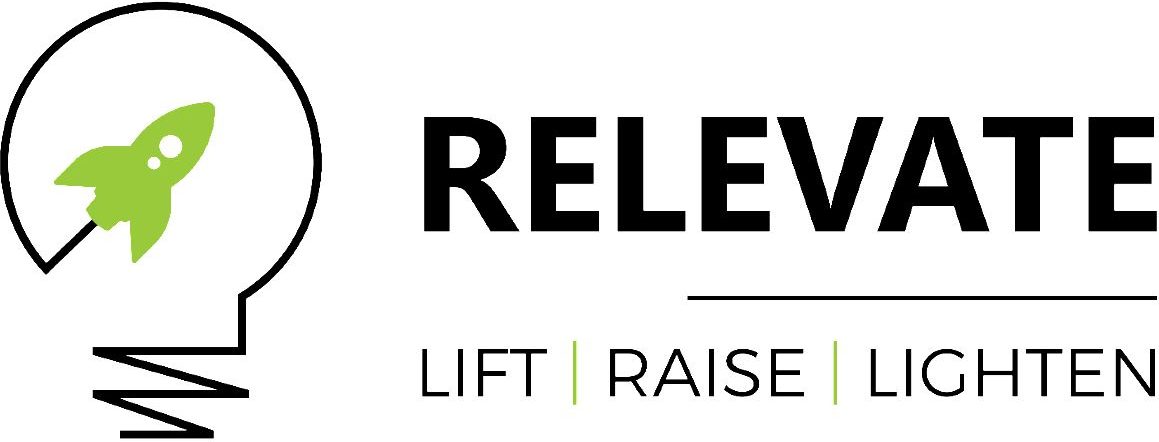1) They Actually Make Time to Go Out and Get New Clients
What happens if you don’t wash your hands after eating? Despite the fact that it is not difficult, it is a time-consuming task. A little more each day means that by the time you have 10 people around for dinner, you have a sink full of filthy dishes and it’s too late to clean them.
An empty pipeline indicates that you haven’t been prospecting, and it will take a long time to get back up to speed.
As a result, great salespeople make it a point to set aside a certain amount of time each day or week for prospecting.
2) It Is Not Necessary for Them to Reinvent the Wheel
As a salesperson, you’ll need to call or email a certain number of times or send emails in order to get the number of responses you need. In a perfect scenario, you would be able to close sales at a 1:1 ratio based on the number of calls made.
That means a significant amount of prospecting is required to create a pipeline. It’s challenging if you’re constantly coming up with new ways to do things when prospecting. To be a successful prospector, you must develop a repeatable technique that can be applied on a wide scale.
3) They Have an Uncanny Ability to Recognise Good Matches
Even though it may seem obvious, outstanding prospectors are intimately familiar with their company’s ideal consumer profile and character. Furthermore, they have a great eye for companies that are similar to their most loyal customers, and they know when to contact them.
4) They Make Use of Technology
The twenty-first century has arrived. If you don’t take advantage of the plethora of knowledge available to you as a salesperson, you’re doing yourself a disservice. The finest prospectors make the most of every instrument they have at their disposal. They incorporate technology into every step of their process, whether it’s learning their CRM and marketing automation systems from the ground up or using LinkedIn, Google Alerts, or other online resources.
5) They Understand the Delicate Balance Between Quantity and Quality
Prospecting, as previously said, is a combination of lead quantity and quality. It’s vital to be selective enough to prevent wasting time by calling everyone, but also fast enough to avoid wasting time by surfing LinkedIn for hours on end. Check out this blog post for four strategies for prospecting that find a balance between quantity and quality.
6) Social Media Is Incorporated Into Their Daily Activities
Even if you are not a lover of social selling, you must have a social media presence. Monitoring a potential customer’s social media activity is one of the most effective ways to detect early signals that they are considering making a purchase or dealing with a corporate problem. The greatest areas to look for are postings about internal issues, tool inquiries, or other posts that imply a potential client has a problem that you can help with.
7) They don’t hurry into a new customer transaction
It’s amazing when you finally get through to someone. Remember, however, that an instant pitch, hard sell, or any topic of conversation centered on making a sale might quickly separate the two of you from each other. Buyers prefer salespeople to focus on their problems rather than how you need to reach quota or how much you want to sell them a pair of steak knives. So, use the initial phone contact to determine whether or not your buyer is a good fit for your product or service.
8) Social Media Is Incorporated Into Their Daily Activities
When prospecting, you must ensure that the encounters you set up with potential consumers are worthwhile. Otherwise, you’ll be wasting your time and effort. Keep an eye out for any indications that your buyer isn’t a good fit. So keep an eye out. Here is a list of disqualifications for your convenience.
What do you think the best prospectors in the industry have in common? Please share your thoughts in the comments section. The following email marketing statistics will be the most essential in 2021: Webinars, video campaigns, and other creative methods of connecting with customers are becoming increasingly popular among marketers today.
Modern communication methods should not dissuade you from utilising email, which is one of the most dependable and time-tested.
Some marketers are starting to wonder if email marketing is still worthwhile. That’s correct.
Email marketing generates $42 for every $1 spent, making it one of the most cost-effective strategies available.
If you’re still on the fence about email marketing, we’ve assembled email marketing data for 2021 to show you how effective it can be.
You can get it right now: The State of Marketing Report for 2021
Statistics on Email Lists (Highlights)
- Every day, 4 billion individuals use email.
- More than 40% of marketers’ email budgets have been slashed since the outbreak.
- Small businesses employ email marketing in 64% of situations.
- One out of every five email campaigns isn’t mobile-friendly.
- Marketers who use specialised advertising get up to a 760 percent boost in income.
- More than a third of marketers send three to five emails every week to their clientele.
- In the last year, 78 percent of marketers have witnessed an increase in email interaction.
- For four out of five marketers, email marketing is still the prefered technique of marketing.
- Personalisation is used by more than a quarter(25%) of retail organisations to adapt their messages to their clients depending on criteria such as gender, colour, or ethnicity.
- More than two-thirds of Baby Boomers say email is the most effective way to communicate with businesses.
Email Marketing Statistics and Best Practices
According to industry estimations, e-mail marketing was worth $7.5 billion in 2020 and is anticipated to be worth $17.9 billion in 2027. Email is utilised by 4 billion individuals every day, according to (Statista, 2021). This amount is expected to climb to 4.6 billion by 2025.
Statistics for the Year 2021
Every day, over 306 billion emails are sent and received. According to Statista (2021), the number of active email accounts hit 5.6 billion in 2019. According to a 2019 Statista survey, (as of this writing,) 64% of small businesses utilise email marketing “”cases” (Campaign Manager) “More than 40% of marketers’ email budgets have been slashed since the outbreak. The Litmus Test (2021)
Across all industries, the average email open rate is 19.8 percent, the click-through rate is 11.3 percent, and the bounce rate is 9.4 percent. (2021, according to Constant Contact)
Marketers who use specialised advertising get up to a 760 percent boost in income. According to Campaign Monitor, email marketing is still the prefered technique of marketing for four out of every five marketers in 2019. According to Litmus, 35% of marketers send 3-5 emails every week to their customers (2020). (This Isn’t Just Another Marketing State in 2020)
In 2020, 78 percent of marketers will feel that email is crucial to a company’s overall performance, up from 71 percent in 2019. The Litmus Test (2020)
In the last year, 78 percent of marketing professionals have observed an increase in email interaction. (This Isn’t Just Another Marketing State in 2020)
Email newsletters, according to 31% of B2B marketers, are the best way to stay in touch with potential customers. In2020, the Marketing Institute for Content Creation and Distribution will be established.
In 2019, email advertising cost the United States more than $350 million. According to Statista (2019), email campaigns that include an A/B test have a 48:1 return on investment (ROI). Litmus(2019, p. 12)
Friday email opens are roughly 19% greater than Saturday email opens, which are only 17% higher.”
(Campaign Manager)” A whopping 66% of marketers feel that artificial intelligence can shorten the time it takes to send emails. According to a 2019 Statista survey, (as of this writing), 23% of firms have previously used interactive components in email, and another 32% aim to do so in the near future. (This Isn’t Just Another Marketing State in 2020)
B2B Email Marketing Statistics
According to 81% of respondents, email newsletters are the most prefered technique of content marketing for B2B marketers. In 2020, the Marketing Institute for Content Creation and Distribution will be established.
One-fifth of all emails are never opened. (A 2019 effort is Email Tool Tester.)
B2B companies launch an email marketing campaign every 25 days. (SuperOffice) 31 percent of B2B marketers say email newsletters are the best way to stay in touch with potential customers in 2020. In 2020, the Marketing Institute for Content Creation and Distribution will be established.
B2B marketers cite email as one of their most successful free organic channels of distribution 87% of the time. In2020, the Marketing Institute for Content Creation and Distribution will be established.
Email engagement is the most crucial indication for gauging content performance, according to 90% of content marketers. In 2020, the Marketing Institute for Content Creation and Distribution will be established.
In 89 percent of all B2B email exchanges, a company name appears in the subject line. Mail marketing software will be the second most used technology for content marketing in B2B firms by 2020, according to (SuperOffice). More than 85% of all marketers say they utilise some kind of digital marketing tool. In2020, the Marketing Institute for Content Creation and Distribution will be established.
The Most Recent Mobile Marketing Statistics
Mobile devices, including smartphones and tablets, account for more than half of all global online traffic. According to statistics, Gmail and Apple’s native iPhone email software will have the most users in 2021. (According to Litmus 2021, one in every five email messages is not mobile-friendly.) By 2020, (SuperOffice)
Launching a mobile-responsive email design campaign can yield an additional 15% of unique mobile clicks. The year is 2019, and MailChimp is still thriving.
The second most prevalent method used by email marketers to improve their performance is mobile-friendly email. (A 2020 project called Relevate)
Tablets, rather than cellphones or desktop computers, account for 9.3 percent of all email clicks. Despite the fact that the bulk of email is now being checked on iPhones, Gmail remains the most popular email service, with over 1.5 billion customers in 2019.
According to the most recent CNBC article, B2C Email Marketing Statistics
To improve open and click through rates, avoid sending more than five newsletters every week. The future has arrived.
Retailers, e-tailers, and other businesses that provide goods and services to customers are now customizing emails by 60%, up from 38% in 2019. The Litmus Test (2020)
Welcome emails have four times the open rate of other types of emails and a tenfold rise in click through rates. The future has arrived.
The single message autoresponder email outperformed all expectations, with a 98 percent open rate and a 37 percent click through rate. The future seems promising for (GetResponse, 2020)
On average, 22 percent of all email messages are opened within the first hour of being delivered. The future has arrived.
45 percent of internet users do not open emails from unknown senders. According to a 2019 Statista research (as of this writing,)
A Prediction for the Future of Email Marketing
Every day, more than nine out of 10 email users check their inbox at least 20 times. More over half (58%) of these people begin their day by checking their email. (OptinMonster) predicts that by 2020, four out of every ten clients would have 50 or more pending email messages. (A 2020 project called Relevate)
34.4 percent of emails sent by artists, authors, and performers are opened, with education (34.1 percent) and tourism (34.0 percent) close behind (32.6 percent ). (2021, according to Constant Contact)
On average, the consulting services industry has the highest email click-through rate of 25%, followed by Administrative and Business Support services at 20% and Home and Building services at roughly 19%. (2021, according to Constant Contact)
Retail emails have a bounce rate of 26%, which is substantially higher than the industry average of 9%. according to Constant Contact)
Email personalisation by gender, colour, and ethnicity has risen from 11% in 2019 to 20% this year. The Litmus Test (2020)
Only 59 percent of Millennials, compared to 67 percent of Generation Z, read their email on a smartphone. (The year 2021, according to Bluecore)
Email is the most personal way to get messages from organisations, according to 74% of Baby Boomers, 72% of Gen Xers, 64% of Millennials, and 60% of Gen Zers. It is anticipated that (Bluecore, 2021)
In the United States, 91 percent of women and 89 percent of men use email. According to a new survey, only Asian Americans (92 percent) and whites (91 percent) are more likely to use email than African Americans, Hispanics, and American Indians or Alaska Natives, according to a Statista article from 2019. (83 percent ). According to a 2019 Statista research (as of this writing,)
Make the Most of Your Email Skills
This data might assist you in making the case for investing more time and money in email marketing. You can always refer back to the advice in this article, but now is the time to put it to use in your next campaign.





